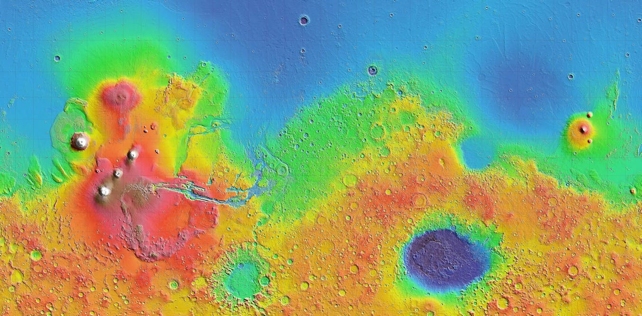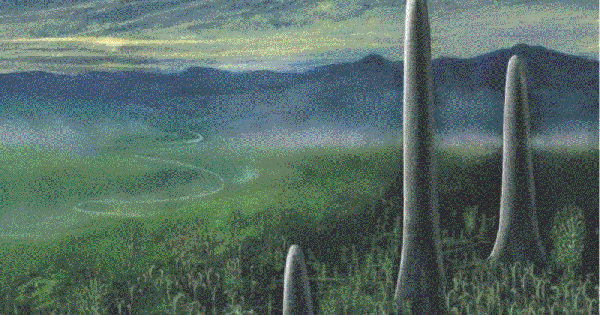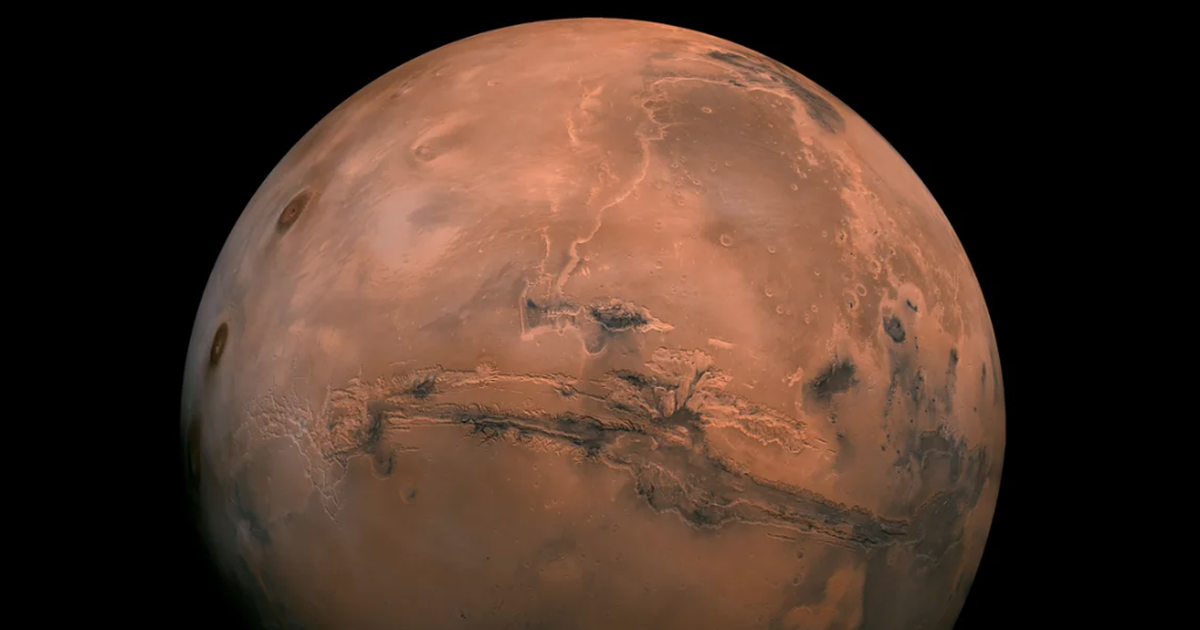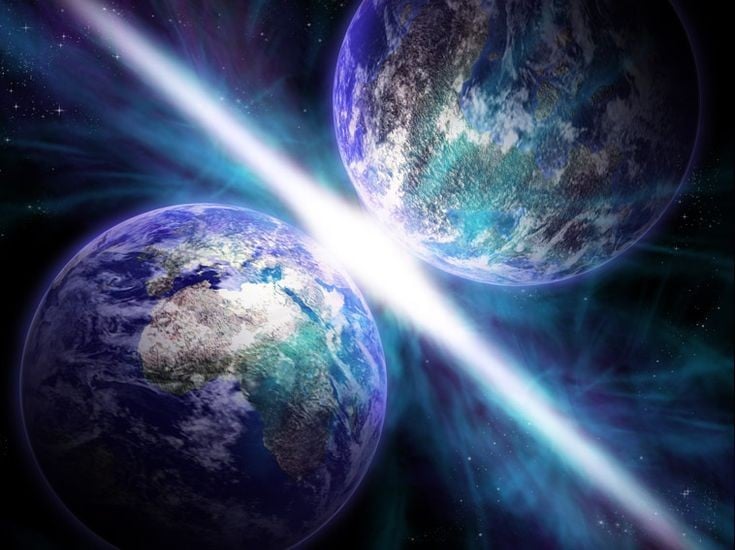(NLDO) - The Northern Hemisphere of a planet in the Solar System looks like it has been stripped of a layer of rock 5-6 km thick compared to the remaining half.
A study recently published in the scientific journal Geophysical Research Letters has solved a long-standing mystery about Earth's neighboring planet: the "Mars Split" puzzle.
The concept of "The Martian Split" has been discussed since the 1970s and has puzzled scientists for half a century.
But now, “digging” data from a NASA spacecraft that just ended its mission a few years ago – InSight – a team of authors from the Chinese Academy of Sciences and the Australian National University have found the answer.

Topographic map showing the dichotomy of Mars The southern highlands are colored yellow and orange, the northern lowlands are colored blue and green - Image: NASA/JPL/USGS
The "Mars divide" refers to the red planet's strangely different northern and southern hemispheres.
The first missions to Mars found that the planet's northern hemisphere was 5-6 km lower than the southern hemisphere. No other world in the solar system has such contrasting hemispheres.
In addition, the surfaces of the two hemispheres are also very different.
The southern highlands are full of impact craters and frozen lava flows. In contrast, the surface of the northern lowlands is smooth and flat, with virtually no geological scars or other notable features.
We also know from geophysical and astronomical measurements that the Martian crust is significantly thicker beneath the southern highlands. Furthermore, the southern rocks are magnetic, while the northern ones are not.
Two main hypotheses have emerged.
The first is the endogenous hypothesis, which suggests that differences in heat transfer through the rise of warmer material and the sinking of cooler material within the Martian mantle have led to the apparent dichotomy on its surface.
The second is the exogenous hypothesis, which suggests that this bifurcation came from space, for example the impact of an object the size of the Moon or slightly smaller, reshaping the planet's surface.
A Chinese-Australian research team analyzed data from the InSight spacecraft and found credible evidence of a cluster of Martian quakes in the Terra Cimmeria region of the southern highlands.
They performed similar calculations for previously observed earthquakes in the Cerberus Fossae region of the northern lowlands.
Comparison between the two regions shows that seismic waves lose energy more quickly in the southern highlands. The most likely explanation is that the rocks beneath the southern highlands are hotter than those beneath the northern highlands.
The temperature difference between the two halves of the planet supports the idea that this division was caused by forces within Mars, rather than by external influences.
This scenario also assumes that the planet's ancient plate tectonics are the main cause of everything.
This also helped shape the water bodies on Mars' surface, with water rising beneath the southern highlands and falling beneath the northern lowlands.
But that was the story of billions of years ago, when life was believed to exist alongside water.
However, the research results have brought hope and contributed to the direction of future life hunts, because they show evidence that Mars once had plate tectonics.
Today, Earth is the only planet in the Solar System with plate tectonics. This process has contributed to stabilizing the planet's environment, climate, and chemical composition, helping to nurture life and possibly triggering reactions that gave rise to early life.
Source: https://nld.com.vn/bi-an-hanh-tinh-bi-phan-doi-giua-he-mat-troi-196250121112355789.htm


![[Photo] Third meeting of the Organizing Subcommittee serving the 14th National Party Congress](https://vstatic.vietnam.vn/vietnam/resource/IMAGE/2025/4/2/3f342a185e714df58aad8c0fc08e4af2)
![[Photo] General Secretary To Lam receives Russian Ambassador to Vietnam](https://vstatic.vietnam.vn/vietnam/resource/IMAGE/2025/4/2/b486192404d54058b15165174ea36c4e)



























![[Photo] Relatives of victims of the earthquake in Myanmar were moved and grateful to the rescue team of the Vietnamese Ministry of National Defense.](https://vstatic.vietnam.vn/vietnam/resource/IMAGE/2025/4/2/aa6a37e9b59543dfb0ddc7f44162a7a7)





































































Comment (0)